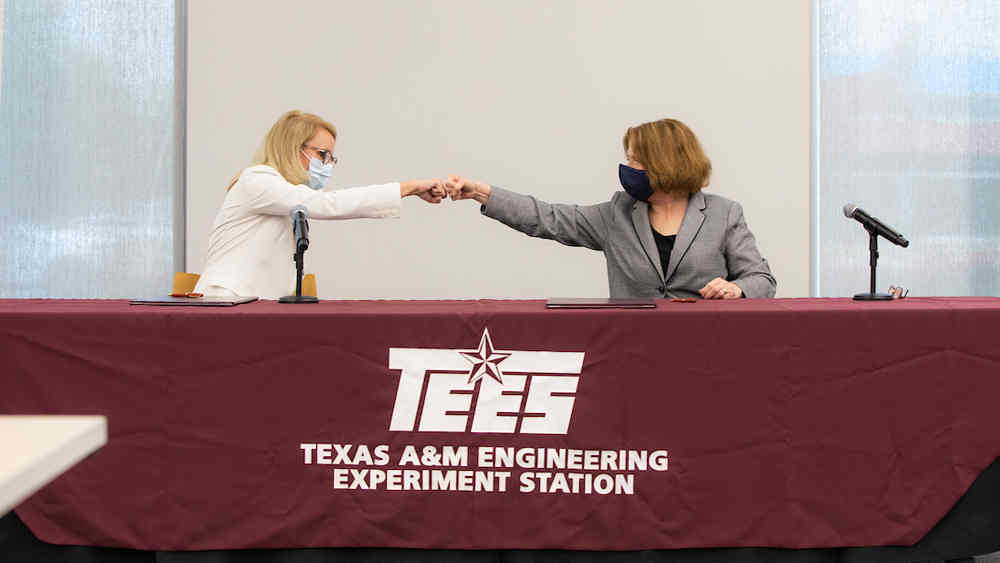
The Texas A&M Engineering Experiment Station (TEES) and Lockheed Martin Corporation signed a master research agreement (MRA) on April 29 to further cement their longstanding research collaboration.
Bridget Lauderdale, vice president and general manager of the F-35 Lightning II Program at Lockheed Martin, and Dr. M. Katherine Banks, vice chancellor of engineering and national laboratories for The Texas A&M University System and director of TEES, signed the agreement during a ceremony in the Zachry Engineering Education Complex.
The two research powerhouses have developed a robust working relationship over the years, collaborating on many cutting-edge research projects. The master research agreement will facilitate collaborations across disciplines including hypersonics, advanced networks, autonomy, and cyber and directed energy.
“Lockheed Martin is excited to support and partner with Texas A&M to solve complex problems that impact the national security of the United States and our allies. The research and development we will accomplish with the master research agreement and our ongoing partnership with the University Consortium for Applied Hypersonics will ensure our nation is prepared for the unpredictable world we live in today and far into the future,” said Lauderdale.
“From hypersonics to directed energy, autonomous vehicles to advanced networks, this partnership will elevate Texas A&M’s $200 million investment into the George H.W. Bush Combat Development Complex and its mission to support leading-edge national security research and technology development,” Banks said. “We have developed a true national security innovation ecosystem, and this expanded partnership with Lockheed Martin will provide tremendous opportunities for our faculty, researchers and students.”
“This close partnership helps facilitate the adoption of these advances while supporting the next generation of hypersonic researchers,” said Dr. Rodney Bowersox, associate dean for research at TEES and Ford I professor of aerospace engineering.
Last year, TEES was selected by the U.S. Department of Defense Joint Hypersonics Transition Office (JHTO), which is led by Dr. Gillian Bussey, to lead the national University Consortium for Applied Hypersonics (UCAH). Bowersox, who is the TEES executive director for UCAH, commented, “This MRA is perfectly aligned with the JHTO vision of an inclusive ecosystem of university, industry and laboratory partnerships to provide innovative solutions to applied hypersonics problems while educating the national workforce.”
The George H.W. Bush Combat Development Complex (BCDC), located on the RELLIS Campus in Bryan, Texas, will soon be the site of many kinds of research testing, including the Innovation Proving Ground (IPG), a challenging outdoor test site for autonomous aerial, ground and subterranean vehicles.
Additional state-of-the-art testing facilities are coming online soon, including a one-of-a-kind Ballistic, Aero-optics, and Materials (BAM) Test Range for directed energy and hypersonics research.
The BCDC complex is located on 2,000 acres and includes a full complement of facilities, equipment and instrumentation, including the Research Integration Center (RIC) with laboratories, accelerator space and offices for the Army Futures Command and other Texas A&M System collaborators.
Construction is currently underway on the BAM Test Range as well as the IPG, which is an outdoor testing area for designing, analyzing and validating new technologies in challenging environments.